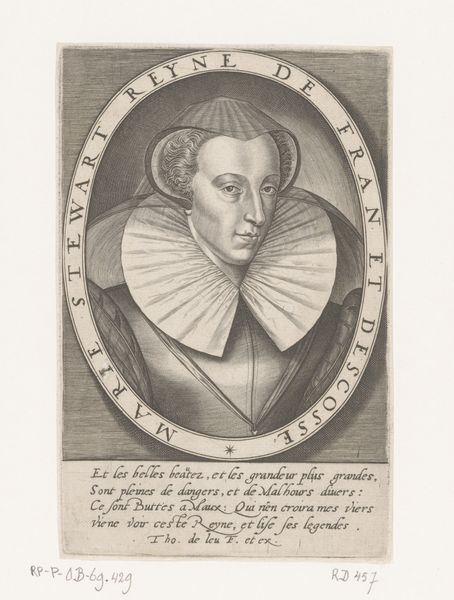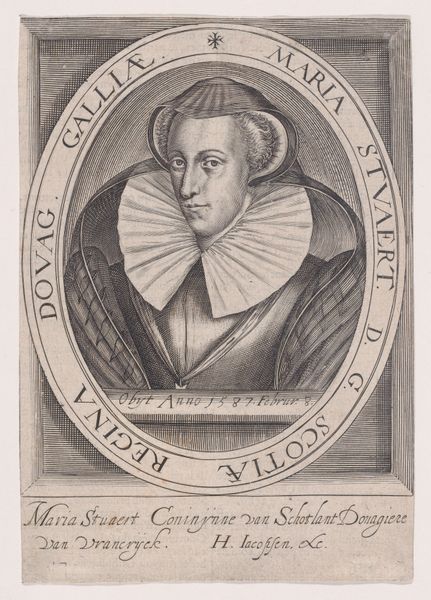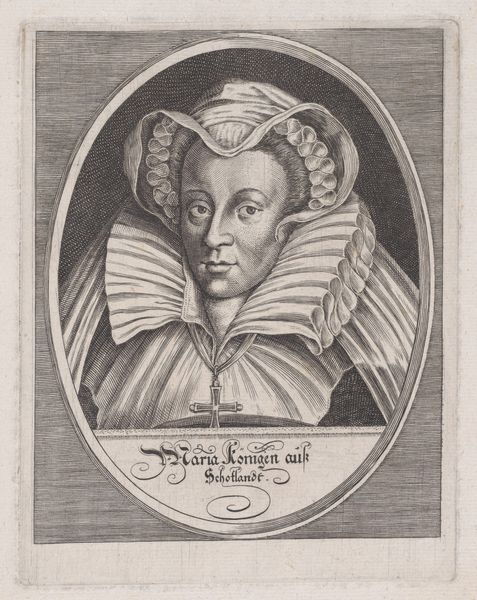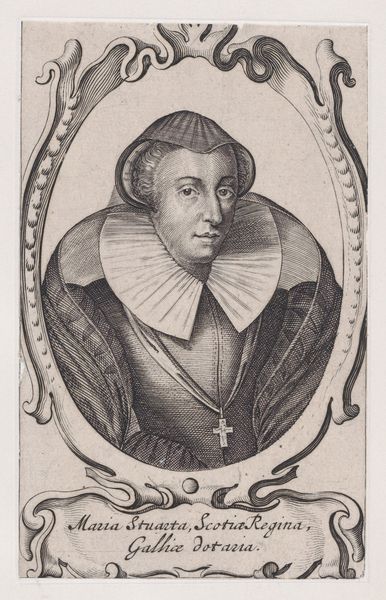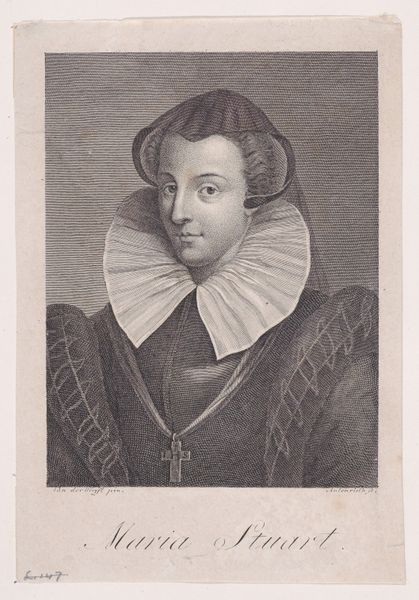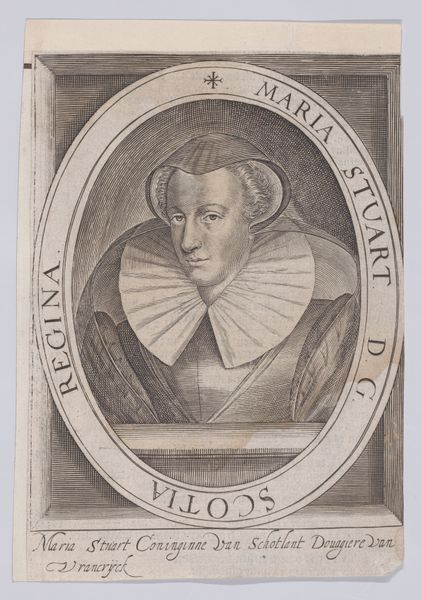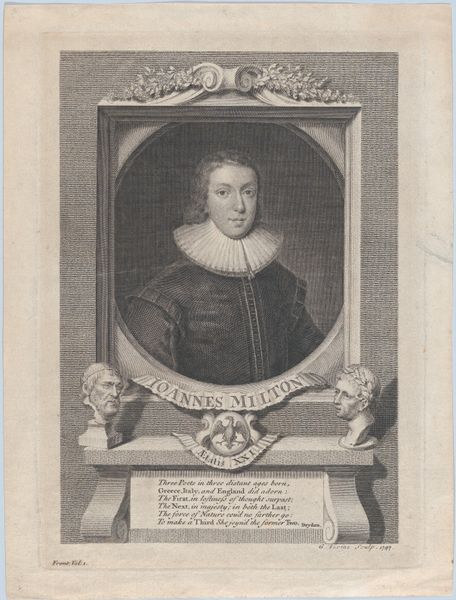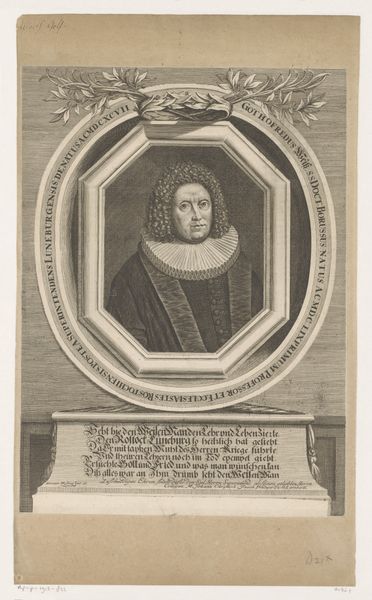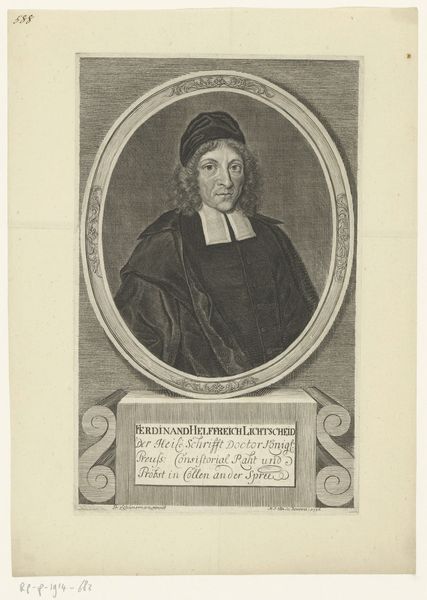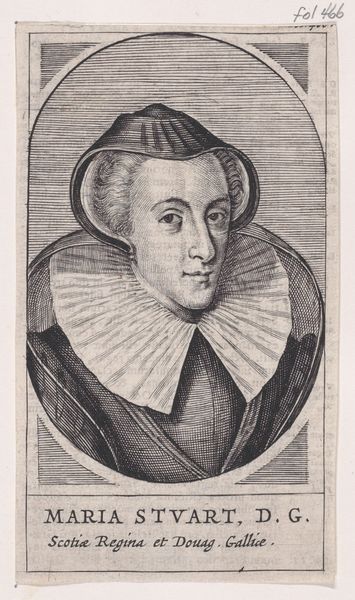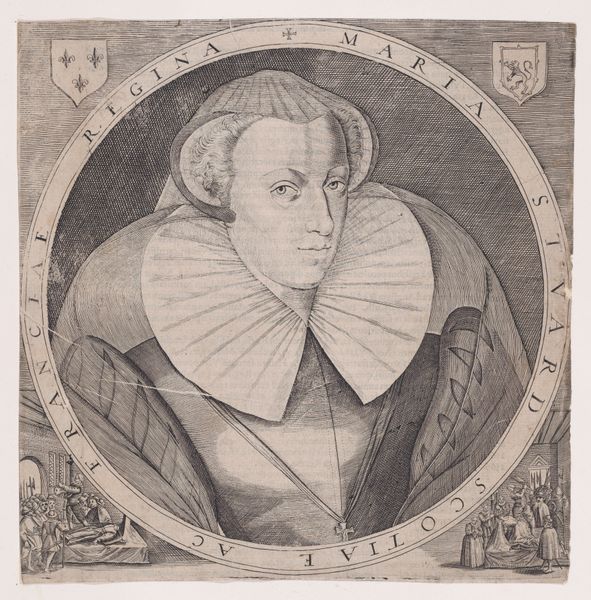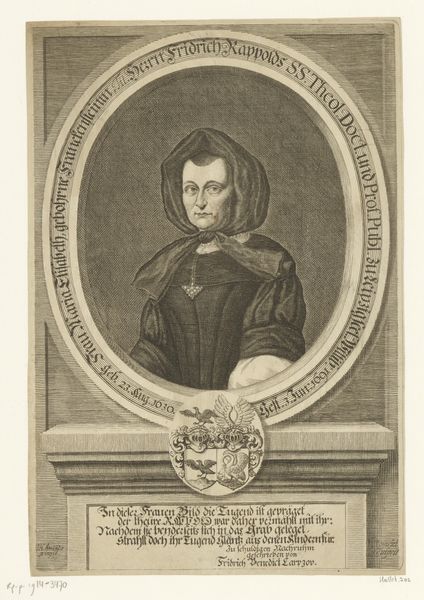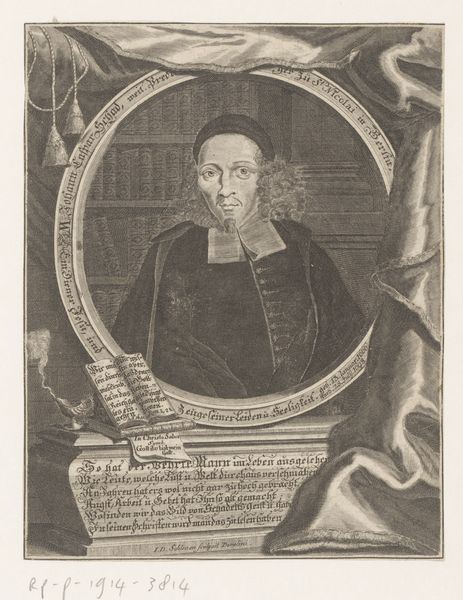
drawing, print, engraving
#
portrait
#
drawing
# print
#
old engraving style
#
history-painting
#
engraving
Dimensions: Sheet (trimmed): 8 7/8 × 6 15/16 in. (22.5 × 17.7 cm)
Copyright: Public Domain
Curator: This is an engraving of Mary, Queen of Scots, created in 1587 by Pieter Maes. Editor: It has such a mournful tone. The tight composition, with her face encircled by what looks like a commemorative inscription, feels almost claustrophobic, like a gilded cage. Curator: The framing imagery you're observing contains powerful symbolism relating to Mary's life and legacy. Note the various scenes; to the right of her neck you'll see an execution scene. A sun motif also appears with a disembodied arm holding aloft what seems like a victory palm or olive branch? This imagery encapsulates the drama that defined her existence. It attempts to condense her narrative of suffering, fortitude and grace. Editor: It feels inherently propagandistic. Considering it appeared so soon after her execution, the attempt to cast her as a martyr of faith seems quite deliberate, if not manipulative. Even the decorative details—her elaborate ruff and the crown emblem near her name—serve to heighten the sense of victimized royalty. How does this imagery connect with contemporaneous artistic depictions of other controversial female figures? Curator: The visual rhetoric resonates with established allegorical representations of virtuous women wronged throughout history. However, there is more complexity here. This portrait isn't merely a depiction of individual tragedy but also reflects broader concerns regarding succession and power struggles during the Elizabethan era. These prints circulated widely, shaping public perception of Mary's fate and cementing her image within a complex tapestry of political intrigue. Editor: Absolutely. Placing it within that political context underscores the limited agency women held, particularly royalty, who became pawns within larger geopolitical chess games. Ultimately, while the visual language aims for the solemn, the emotional narrative I get is one of the systematic disempowerment, her individual humanity lost in the larger story. Curator: I concede it makes a compelling case as a meditation on both resilience and powerlessness amidst ruthless politics and patriarchal structure. Editor: Exactly. It leaves one reflecting upon who holds the power to frame such narratives, then and now.
Comments
No comments
Be the first to comment and join the conversation on the ultimate creative platform.
